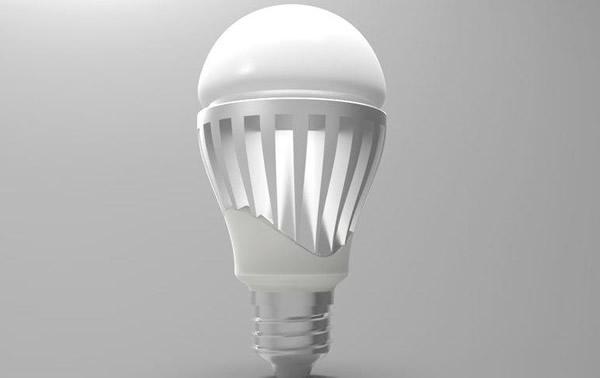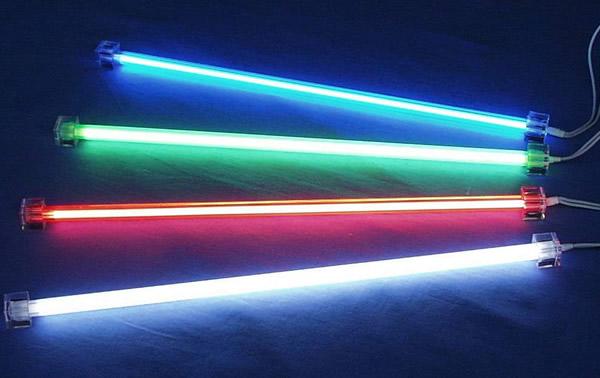Basic Difference Between Isolated Power supply and Non-isolated Power Supply
At present, in the general LED lighting market, there is a distinction between non-isolated design and isolated drive power. Non-isolated design is limited to double insulation products, such as replacement products for light bulbs. The LED and the entire product are integrated and sealed in non-conductive plastic. Therefore, the end user does not have any risk of electric shock. The secondary products are all isolated and relatively expensive. But where users can access the LED and output wiring (usually in the case of LED lighting and street lighting applications), this product is essential.
With an isolation transformer or an electrical isolation LED drive power supply, consumers can directly touch the LED with their hands without getting an electric shock. Although the LED drive power supply without an isolation transformer can still achieve partial mechanical insulation with the help of a protective casing, the LED cannot be directly contacted during operation at this time.
Insulated Bulbs Will Become Mainstream in the Future
The physical design determines whether the drive is isolated or non-isolated. Security rules usually require the use of two separate isolation layers. The designer can choose two kinds of physical isolation layer, namely plastic diffuser cover and glass cover, and use non-isolated power supply. If the cost of physical isolation is too high, there are mechanical difficulties, or too much light is absorbed, the electrical isolation problem must be solved in the power supply.
Isolated power supplies are usually larger than non-isolated power supplies of the same power level. Lighting designers must perform a lot of cost and design optimization work in each product they design. As it is suitable for different applications, whether to use an isolated insulating transformer or an isolated protective lamp housing, designers will always have different opinions from different perspectives.
Usually, they will analyze from many aspects. Such as cost and manufacturing process, efficiency and volume, insulation reliability and safety specification requirements, etc. The cost of driving with a transformer is higher, but it also makes LED lamps more practical. It can meet the needs of end users who accidentally touch the LED. When the glass envelope of the incandescent lamp is easily damaged, an ordinary bulb of the E27 model can be replaced with an LED lamp.
In addition, lamps used in industrial areas or office equipment applications do not need to reach end users. Such as street lights and shopping malls, the LED lights at this time also really need an isolation transformer.
Reliability of Isolated Power Supply
As a product that the end user can use safely, the designer will definitely consider the reliability of insulation and isolation. As a complete product, the part of the surface of the product that users can touch must be isolated to prevent electric shock.
From the perspective of the entire product system, isolation is inevitable. The only difference is the location where the isolation is set. Some designers use an isolated transformer design, so they can simplify the heat dissipation and lampshade design. If a non-isolated drive design is used, reliable insulation requirements must be considered in the lamp housing and other structures. Therefore, as a power drive, both isolated and non-isolated solutions have always existed at the same time.
The main challenge that global LED driver power manufacturers may face is to find low-cost AC/DC drivers to meet the need to achieve more stringent power factor and efficiency performance in low-cost power systems. In the future, the use of high-quality, high-reliability power supplies in systems with limited space and difficult heat dissipation (such as LED lamps) will no longer be free. However, before the end user has used many bulbs with a lifespan of about 10,000 hours, it is quite difficult to prove its high quality.
Transformer-based Isolated LED Drive Power Will be the Mainstream
Isolated and non-isolated LED drive power solutions have their own advantages and disadvantages. Class II will be the mainstream because it simplifies the LED heat dissipation problem. The Class I or II system relies on the grounding system. In most cases, it has a certain relationship with the installation location. Class II is more common, and it requires dual-level or reinforced isolation, that is, transformer magnetic windings, insulating tapes, and physical isolation. Class I systems require a grounded enclosure and/or mechanical barriers, which are not required for Class II systems.
Several trends are currently driving the development of the LED lighting market. The first is the continuous improvement of the efficiency of high-brightness LEDs, and the continuous emergence of very high-efficiency, high-reliability, constant-current LED drive power supplies. Secondly, global legislation prohibits incandescent lighting (due to its low efficiency), and the gradual decline of CFL energy-saving lamps. Because if the CFL lamp is broken, it will release mercury that is harmful to the environment.
Problems faced by LED lights
The combination of these factors is making LED lighting a long-term development trend. Of course, low system costs (including LEDs, thermal management systems and LED drivers) will always be the driving force behind the widespread adoption of LED general lighting by consumers.
In fact, in many LED lighting products, failure is a common phenomenon. Most of it is because of the failure of the power supply, not the failure of the LED. At the design level, this means that OEMs must become experts in system thermal design.
LEDs provide high efficiency, but they also generate more conduction heat than incandescent or energy-saving lamps.
Since many LED lighting applications are enclosed in a small space, it is difficult to use ventilation to dissipate heat. Without careful thermal design, LEDs and power supply drive circuits can easily degrade or fail permanently due to high temperatures.
Non-isolation May Become the Mainstream of Indoor Lighting
As indoor low- and medium-power LEDs gradually adopt better insulating materials such as plastic-clad aluminum and high-thermal-conductivity plastics for lamp body materials, non-isolated general lighting drive power may become the mainstream trend in the future.
Generally, to ensure that consumers can safely use LED lighting products, lighting manufacturers must consider the reliability of the insulation and isolation of the LED lighting drive power supply. In other words, the purpose of isolation is to ensure that the parts that users can reach will not get an electric shock. Therefore, from the perspective of the entire product system, isolation is inevitable. The only difference is that the location of the isolation is different.
For LED lighting drive power, isolated and non-isolated solutions have always existed at the same time, because they are suitable for different application areas. At present, in the field of indoor lighting, LED manufacturers have begun to pay more attention to insulation requirements in the material and structure of LED lamps and lanterns, resulting in more and more non-isolated LED driving power sources in the field of low-power lighting.
Due to the complex structure of the isolated power supply, more components, high cost, low efficiency and reliability, it is not suitable for mass production. The non-isolated power supply has the advantages of simple circuit, fewer components, small size, lower cost, and higher efficiency. With the market’s increasing requirements for cost and efficiency, non-isolated power supplies have begun to take the stage in the field of low-power LED drivers.
Constant current drive becomes the mainstream
At present, in the application of low- and medium-power LED lighting, a more obvious trend in the market is that low-power LED lamps begin to use non-isolated power supply topologies more and more. The current popular high-voltage linear constant current source is a kind of non-isolated topology.
Non-isolated high voltage linear constant current LED drive power technology has become a new hot spot for LED light source drive. Since the non-isolated high-voltage linear constant current drive power supply has no transformer, inductor and electrolytic capacitor, the overall cost can be lower than that of the isolated drive power supply.
The high voltage linear constant current drive power chip can work under 650V high voltage, and its application circuit is Buck circuit. There are no transformers, inductors and electrolytic capacitors in its working circuit. It can be surface-mounted on the same surface of the light board together with the LED lamp beads and the rectifier bridge stack, which is suitable for mass and automated production.
In addition, the constant current accuracy of the non-isolated constant current power supply can reach 3%-5%, the power factor compensation is greater than 0.9, and the power supply efficiency is greater than 92%. Therefore, it is expected to become the first choice for indoor LED lighting fixtures.
At present, the 3W, 6W, 8W and 10W bulb lamp power supplies on the market are all realized by non-isolated power supplies. Using patented constant current control technology, within the input voltage range of 90V AC to 264V AC, the constant current accuracy is less than ±3%, and the system efficiency can reach more than 90%.
Insulation technology boost
The physical structure design of LED lamps determines whether the driver needs to be isolated or non-isolated. To ensure product safety, insulation and isolation reliability must be considered. As indoor low- and medium-power LEDs gradually adopt better insulating materials such as plastic-coated aluminum and high-thermal-conductivity plastics for lamp body materials, non-isolated general lighting drive power may have become a general trend.
Low-cost, suitable for large-scale manufacturing and convenient transportation of plastic, ceramic or glass will be the mainstream of the future lamp housing high-insulation structure application market. For example, the all-plastic LED fluorescent tube uses a non-isolated power supply and φ5 LED.
Due to the heat dissipation problem, the light attenuation is serious or the service life is short, and the lumens and power density of LED light sources are now effectively improved. Use fewer light sources and lower cost to meet the brightness requirements of traditional lighting fixtures. At present, Philips, OSRAM, etc. have launched LED fluorescent tubes represented by all-plastic tubes and glass tubes.
Plastic-clad aluminum radiator is a heat-conducting plastic shell and aluminum core radiator. Thermally conductive plastic and aluminum heat sink are molded at one time on the injection molding machine, which is suitable for mass automated production. The heat of the LED lamp bead is quickly transferred to the thermally conductive plastic through the aluminum heat dissipation core, and the thermally conductive plastic uses its multiple wings to form air convection for heat dissipation. Using its surface to radiate part of the heat, it can solve the high and low voltage isolation inside the LED lighting.
Comprehensive cost advantage is obvious
Professional manufacturers of LED lamps will analyze lamps from many aspects, including cost and manufacturing process, efficiency and volume, insulation reliability and safety specifications.
Generally speaking, the fewer components in the electronic circuit, the higher the reliability. Compared with non-isolated power supplies, isolated power supplies have more components, higher cost, and higher efficiency. The problem of high heat is not easy to deal with, especially the LED fluorescent lamp with built-in tube. For low-power LED bulbs, non-isolated power supplies have more advantages in energy saving and cost.
The industry believes that in order to meet the needs of the market, reducing costs, improving efficiency and reliability have become the goals pursued by every enterprise. In the field of LED lighting, whoever has a low price and high quality has an advantage. In the future, power solutions will also move towards low cost, light weight, thinness and reliability.
Compared with the isolated LED power supply, the non-isolated LED power supply has the advantages of simple circuit structure, high circuit conversion efficiency, and fewer components, which are all required by the lamp design. The non-isolated drive has the advantages of higher efficiency and lower cost, and it is bound to become the future development trend of low power.



